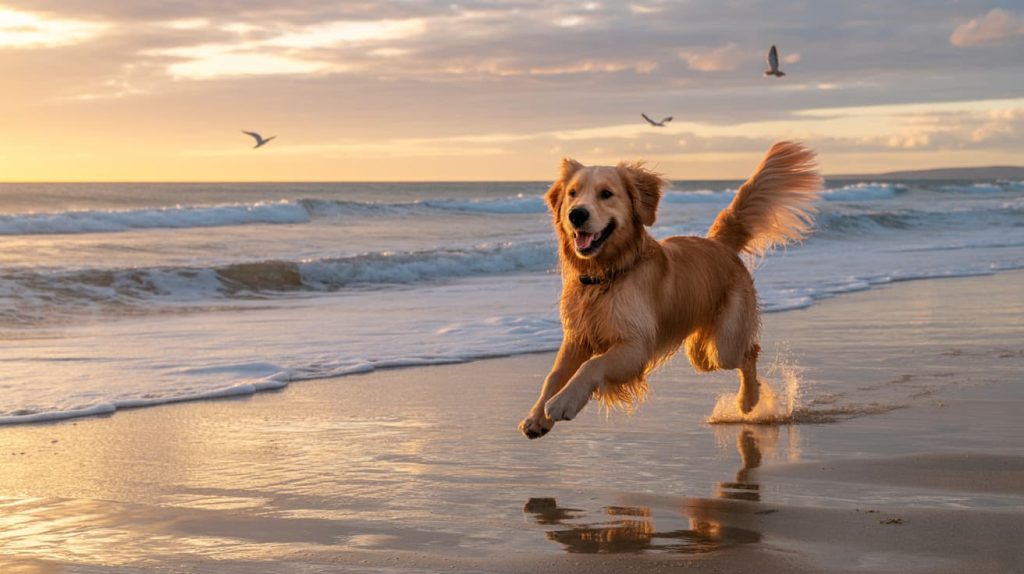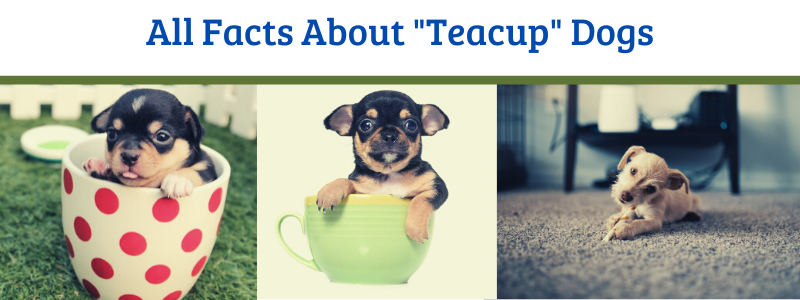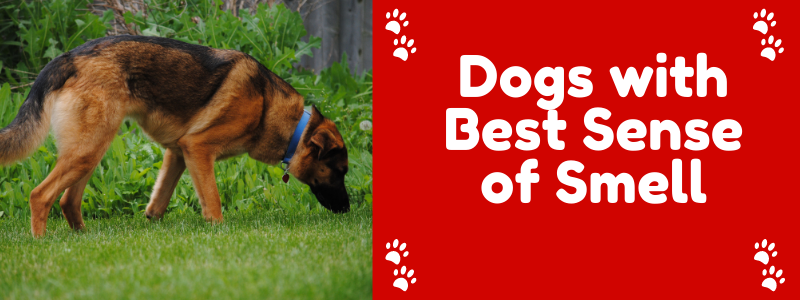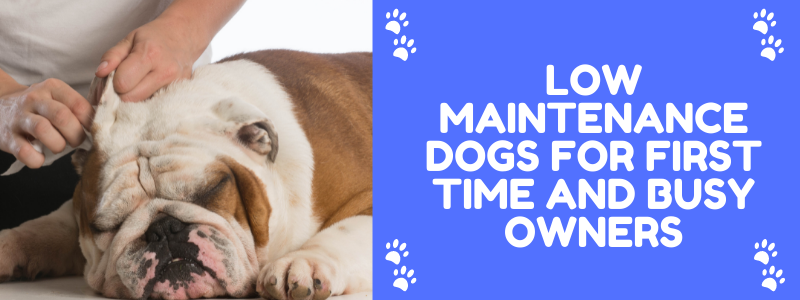Golden Retrievers are energetic, playful, and full of life — it’s part of what makes them such lovable family companions. But with all that enthusiasm comes an important question: how much exercise do Golden Retrievers really need?
Whether you have a lively puppy or a mellow senior, keeping your Golden physically and mentally active is essential for their happiness and health.
Let’s explore the ideal exercise routines, activity types, and expert tips to ensure your Golden Retriever stays fit, calm, and content.
1. Why Exercise Is Essential for Golden Retrievers
Golden Retrievers were bred as sporting dogs, designed to retrieve game for hunters over long distances and through challenging terrain. This background means they have high stamina and require regular activity to stay healthy and balanced.
Without proper exercise, they can easily become bored — and a bored Golden may chew furniture, dig up the garden, or develop unwanted behaviors.
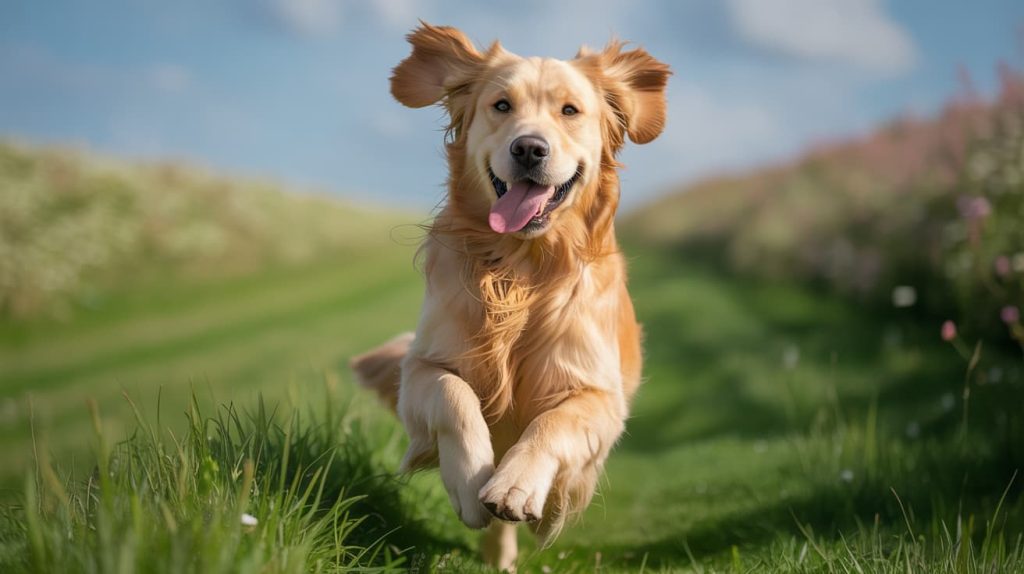
Regular exercise helps:
- Maintain a healthy weight and prevent obesity.
- Support muscle and joint strength.
- Improve cardiovascular health.
- Reduce anxiety and destructive habits.
- Strengthen the bond between you and your dog.
2. How Much Exercise Does a Golden Retriever Need?
On average, adult Golden Retrievers need 1–2 hours of exercise every day. This can include a mix of walks, playtime, swimming, and mental stimulation. The exact amount depends on their age, health, and energy level.
Here’s a general breakdown:
- 🐶 Puppies (up to 1 year old):
Golden Retriever puppies have bursts of energy but shouldn’t overexercise. A good rule of thumb is 5 minutes of exercise per month of age, up to twice daily. For example, a 6-month-old puppy can handle around 30 minutes per session. - 🐕 Adults (1–7 years old):
Adult Goldens are at their peak energy level and need at least 1.5 hours of daily activity. Mixing walks, off-leash play, and games helps keep them both physically and mentally stimulated. - 🐾 Seniors (8+ years):
Older Golden Retrievers still need daily movement but at a slower pace. Gentle walks, swimming, or light play for 30–45 minutes per day helps keep joints flexible and minds sharp.
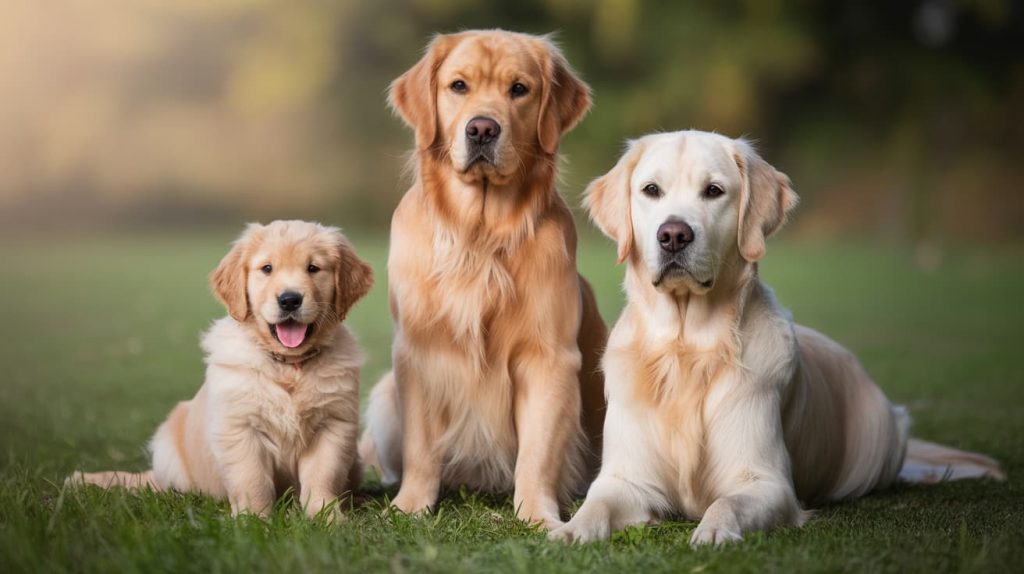
3. The Best Types of Exercise for Golden Retrievers
Golden Retrievers thrive on variety. Since they were bred to work and retrieve, they love activities that engage both their bodies and minds.
a. Daily Walks
Golden Retrievers need at least two daily walks — one in the morning and one in the evening. A brisk 30–45 minute walk helps them release energy and explore their surroundings.
b. Fetch and Retrieval Games
True to their name, Goldens adore playing fetch. It taps into their natural retrieving instincts and burns off lots of energy. Tennis balls, frisbees, or floating toys are perfect.
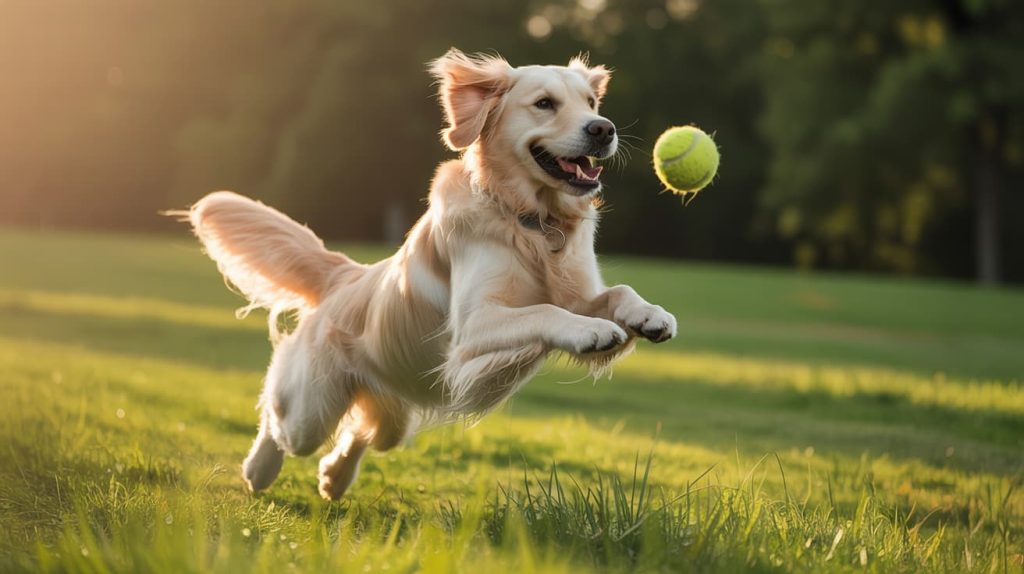
c. Swimming
Golden Retrievers have a natural love for water. Swimming is an excellent low-impact exercise that strengthens muscles while being gentle on joints — perfect for all ages.
d. Hiking and Outdoor Adventures
Hiking gives your Golden the challenge and variety they crave. The uneven terrain and new scents stimulate both their body and senses. Always bring enough water and take breaks during long hikes.
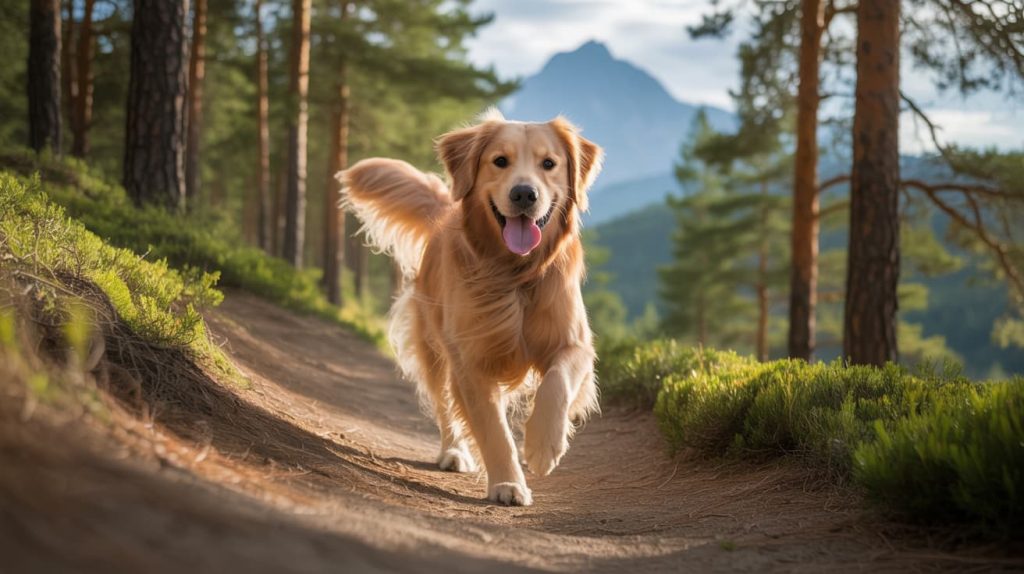
e. Mental Stimulation
Exercise isn’t only physical. Goldens are intelligent dogs that need mental challenges. Puzzle feeders, scent games, and obedience training sessions help tire them out mentally.
4. Signs Your Golden Retriever Isn’t Getting Enough Exercise
Even with the best intentions, it’s easy to under-exercise a Golden. Here are some telltale signs they need more activity:
- Restlessness or pacing at home.
- Excessive barking or chewing.
- Weight gain or loss of muscle tone.
- Overexcitement during walks.
- Difficulty settling down at night.
If you notice these behaviors, gradually increase exercise time — start with longer walks or an extra play session in the evening.
5. Overexercising: When Too Much Is a Bad Thing
While exercise is essential, too much can lead to exhaustion or joint injuries, especially in puppies and senior dogs. Golden Retrievers are prone to hip and elbow dysplasia, so it’s crucial to balance activity with rest.
Avoid running on hard surfaces, jumping excessively, or long-distance runs for young puppies. Give them plenty of recovery time after energetic play.
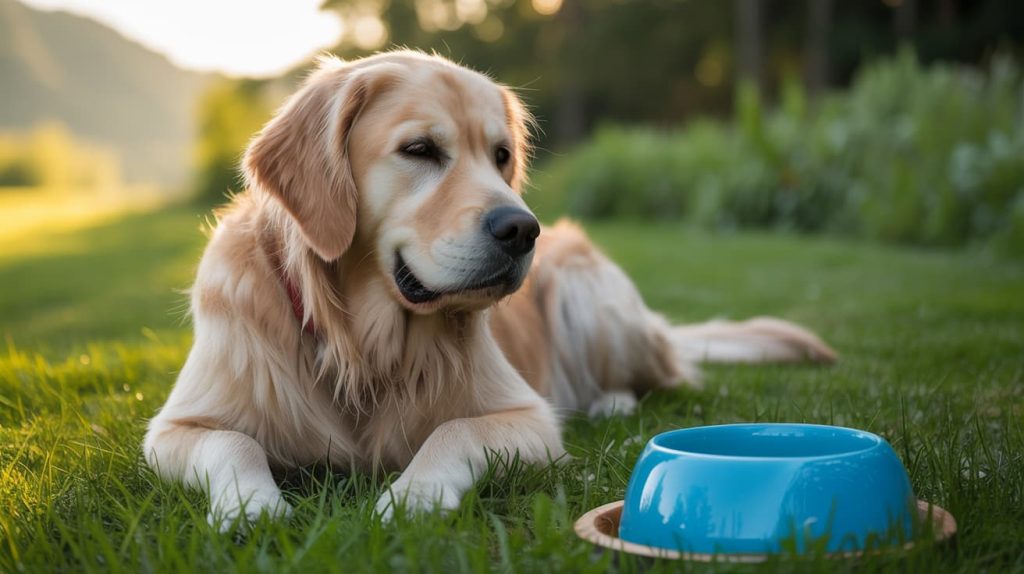
6. Indoor Exercise Ideas for Rainy Days
When the weather doesn’t cooperate, you can still keep your Golden active indoors:
- Play tug-of-war with a sturdy rope toy.
- Practice basic commands or trick training.
- Set up a mini obstacle course with cushions and chairs.
- Use treat-dispensing toys for mental engagement.
These indoor games not only keep them moving but also strengthen your bond.
7. Tailoring Exercise to Your Golden’s Lifestyle
Every Golden Retriever is unique. Their ideal activity level depends on lifestyle and personality:
- High-energy Goldens (common in young adults) may love running, agility, or frisbee.
- Calmer Goldens might prefer long walks and gentle swimming.
- Working Goldens (therapy or service dogs) need structured physical and mental challenges.
Pay attention to your dog’s cues — if they’re panting excessively or slowing down, it’s time to rest.
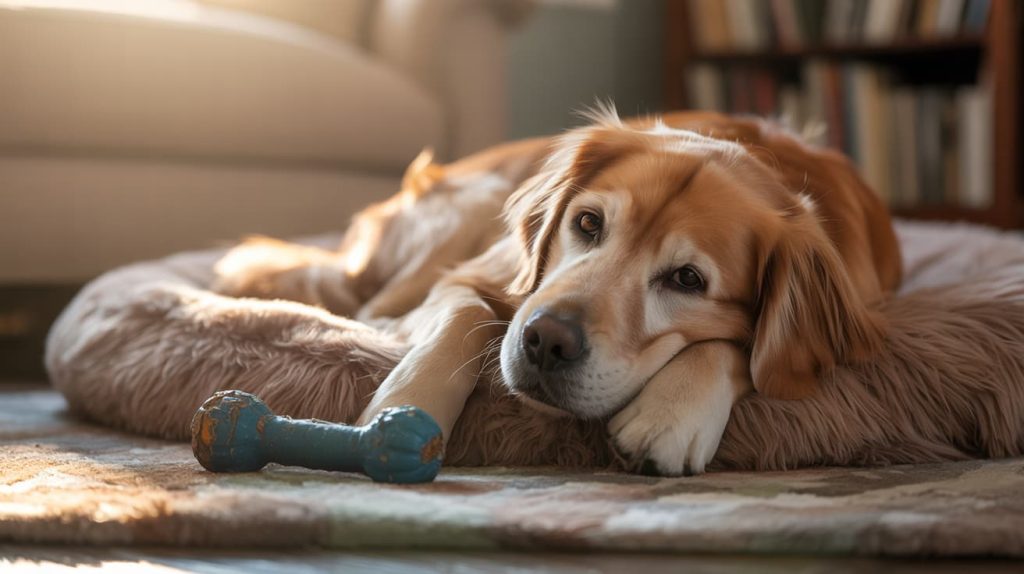
8. How Exercise Affects a Golden Retriever’s Behavior
A well-exercised Golden is a happy and well-behaved Golden. Regular activity helps regulate their mood, reduces anxiety, and improves focus during training.
Many behavioral issues — like jumping, barking, or chewing — disappear once a consistent exercise routine is established. In short, tired Goldens are good Goldens.
9. The Ideal Daily Routine for an Active Golden Retriever
Here’s a sample routine you can follow for a healthy adult Golden:
- Morning: 30–45 minute brisk walk or light jog.
- Afternoon: Short training session or indoor puzzle play.
- Evening: 45-minute game of fetch, swimming, or a hike.
- Before bed: Short calm walk or cuddle time to unwind.
10. Final Thoughts: Balance Is the Key
Golden Retrievers are happiest when they get the right mix of physical activity, mental stimulation, and rest. Whether you’re taking them on a mountain hike, playing fetch in the backyard, or enjoying a peaceful evening stroll, every bit of movement strengthens your bond.
By understanding and meeting their exercise needs, you’ll have a healthier, calmer, and truly happy Golden by your side.

